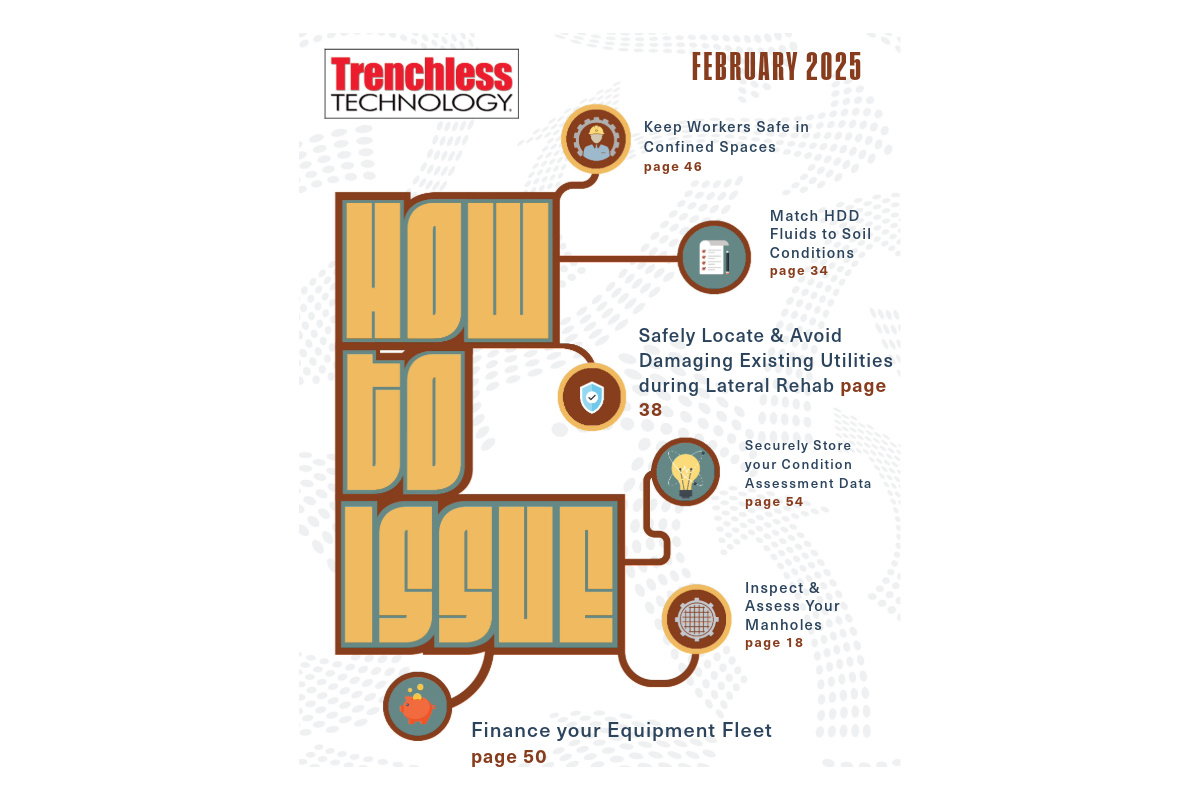Cross Bore Safety Association Formed
June 1, 2008
One of the foremost safety issues confronting the utility industry today is the danger of cross bores. Cross bores can occur between all types of utilities — communication, electric, gas distribution and sewer, — and can lead to dangerous situations, particularly when the cross bore involves gas lines. The Cross Bore Safety Association (CBSA) was formed to address this issue. Its first organizational meeting was held on March 26, in Las Vegas. The aim of the CBSA is to bring the utility industry together to prevent new cross bores and eliminate existing (legacy) cross bores.
CBSA announced its new board members and officers as follows: chairman, Mark Bruce, president, Can Clay Corp.; vice chairman, Mark Wallbom, CEO, Underground Imaging Technologies; secretary, Walt Kelly, president, Walt Kelly Enterprises; (board members) William Etzler, regional vice president, Aqua Indiana Inc.; Mike Kemper, CEO, NPL Construction Co.; Steve Lacy, USA vice president, Hydromax USA; Brian Mattson, strategic account manager, Gas Technology Institute (GTI); and Joe Purtell, director of software, Cues Inc.
Cross bores have become a regular occurrence in the last 20 years, as trenchless installation of utility lines has become more and more commonplace. Locating and marking utility lines before construction begins on a site, which is generally mandated by the one-call system, is an important aspect of preventing new cross bores, but unmarked sewer lines continue to be a source of concern for industry professionals because they have been the last utility to fall under regulation in most locations. Currently, locating and marking sewer lines before construction is required in only 40 states. Enforcement of these regulations can be poor, even when they are clearly defined.
A utility line may, therefore, be installed through a sewer lateral and over time create a blockage. When the blockage is attempted to be cleared, usually by mechanical means, damage to the installed utility is imminent. This can pose a dangerous situation when dealing with gas lines.
“In terms of frequency, cross bores of natural gas lines into mainline and lateral sewers are thought to occur two to three times per mile of mainline sewer. This is an estimate based upon legacy cross bore elimination projects in high-risk areas. The problem must be solved not only by future prevention, but also by retroactive correction, said CBSA chairman Mark Bruce.
CBSA has already made available two publications. CBSA Legacy Crossbore Verification Guidelines is a step-by-step guide to evaluating risks and developing legacy inspection projects. CBSA Legacy Inspection Contract is a draft sample contract for locating existing cross bores of gas lines in sewers. Future publications will include development of both a consensus guideline and sample contract documents for elimination of cross bores resulting from new construction projects. Recommended informational releases to be supplied by equipment manufacturing companies and to drain cleaning contractors will also be forthcoming.
CBSA welcomes the participation of all interested parties to create solutions for the elimination and prevention of cross bores. For more information, contact CBSA at www.CrossBoreSafety.org.




